Old Cars become Ham Radio Test Beds
Older cars in this family become the guinea pigs for all sorts of ham radio experimentation. Our Ford Taurus is no exception.
Being the oldest car, it gets strange wiring added, all sorts of ham treasures left in the trunk and, well, if you are a ham or the long suffering spouse of a ham, you understand precisely what I speak of.
As a preeminent insult to this 223,000 mile Ford, it suffered a big hole punched through its roof for the all important VHF/UHF communications. It’s tactical you know 😐 The clean and simple lines of the Taurus provide a nice smooth, albeit small, ground counterpoise for the midpoint NMO.
The above install has a simple 19 inch or so stainless steel whip to provide only VHF capabilities for my mobile FM rig.
My friend Greg did something similar with his Subaru except he went Extreame NMO strengthening considerably the skin of the roof so he could go “maximum” on his 2m/440 whip to get the edge during the Virginia QSO Party. His effort is well worth a read.
Greg was kind enough to loan me his big antenna along with a more typical dual band mobile antenna. I found a dual-band whip on some long forgotten NMO mag mount. These three antennas along with my 19 inch VHF only aerial comprise a set that I was eager to measure with a VNA.
So today I insulted the Taurus one more time by demoting it to antenna test stand for the above four whips.
Antennas under test
The four mobile antennas are:
- Diamond SG7900ANMO – This is a very tall antenna not suitable for many NMO installations. It has two collinear radiating sections for 2m and more for 440.
- Larsen NMO 2/70 – This is a classic loaded half-wave for 2m and double collinear for 440. This has a large transformer NMO base and a single 1/2 inch or so diameter coil about midway up.
- Cushcraft CS-270M – This has the same topology as the Larsen albeit with a much more narrow enclosed coil.
- Laird QW144 – If you don’t have a lot of cash and can do without 440, this inexpensive antenna is for you. It is simply a 1/4 wave vertical piece of wire on a very small profile NMO mount.
Antennas on the Taurus
Let’s have a look at each antenna on the Taurus.
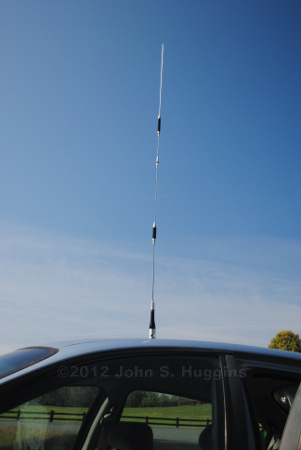
My my… a big one. This screams “ham” doesn’t it? Warning WARNING WARNING… this thing’s nickname is “can opener.” Do not drive with this on your car unless you verify the rigidity of your vehicle’s metal skin. Greg added materials to his Subaru roof skin to accommodate the large moments certainly possible from the wind area. Thwacking tree limbs is worse still.
Next we have one of the most popular dual band antennas.
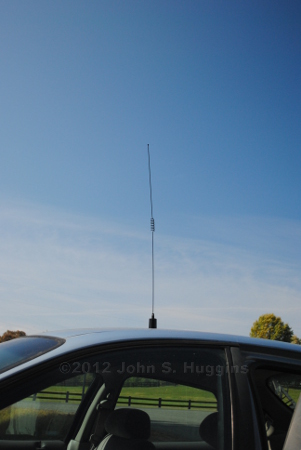
My favorite feature is the entire whip with coil is one long piece of metal involving no fasteners or joints.
The Cushcraft below has been in my garage for a great many years.
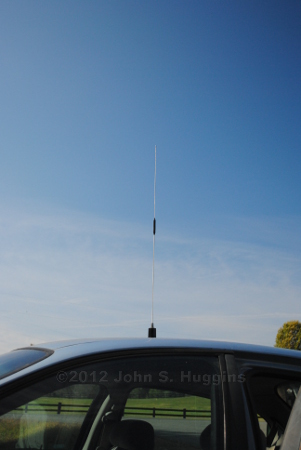
It resembles the topology of the Larsen and should behave similar. The coil is significantly smaller in diameter which should make it a bit less efficient.
Finally we have this simple 1/4 wave whip in use as my daily driver antenna.
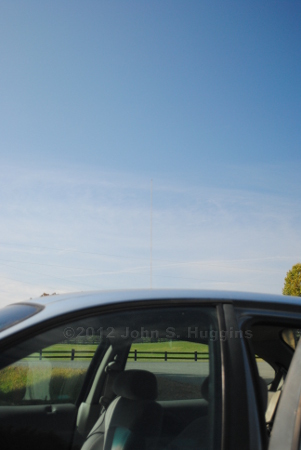
Can’t see it? Look harder. Even the camera didn’t find the whip to establish focus. That’s the point of a whip like this isn’t it? When you don’t want a conspicuous antenna, these 1/4 wave NMO whips fulfill that role nicely.
On to the measurements.
Mobile Antenna SWR Measurements
The next figures reveal the SWR at VHF and UHF of all four antennas as measured at the radio end of the coaxial cable on my Taurus. The radio lives on the floor behind the drivers seat so the left rear door was open to easily read and adjust an analyzer.
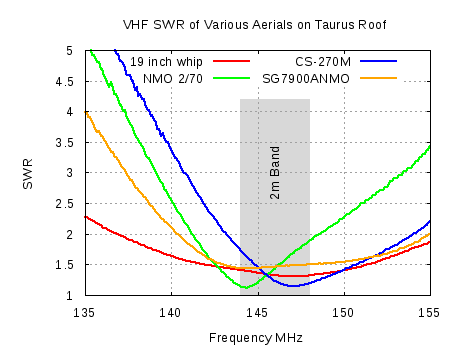
The above VHF SWR graph reveals the plain Laird 1/4 wave whip (in red) has the broadest bandwidth. This agrees well with simulation outlined in a February post. Green and blue are the two similar coil-in-the-middle antennas. As expected the Cushcraft’s smaller coil presents a perceptible broadening to the response, but for all practical purposes these behave the same. The only real difference is the overall tuning; the Larsen needs some shortening.
The orange trace reveals the big Diamond antenna’s complexity. For a collinear I did expect to see more narrow response, but seeing is believing.
Let’s have a look at the UHF response across the entire 70cm band.
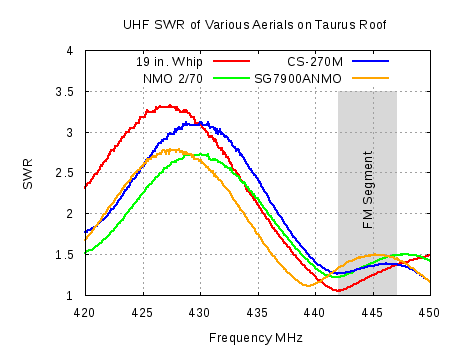
The quick fact to take away from the UHF response is they all focus on frequencies found in mobile FM 440 operations. This makes sense. If you were ever tempted to use a 440 mobile antenna in the lower portion of 70cm band, you might want to check your SWR first.
Did you notice something odd in the UHF SWR graph? Look again. See it? Look at the red trace. The “VHF Only” 19 inch whip loads up quite well at the 70cm FM frequencies. Does this mean the short simple 2m whip will function well at 440? No not at all and we will research why in a future post. The brief reason is the antenna is 3/4 wave long at 440 MHz which means it will absorb energy, but won’t focus that energy towards the horizon like we want. Is it better than nothing at all? You bet, but there are far better ways to ensure your 440 power goes where you want. A good SWR does not necessarily mean a good performing antenna.
Mobile Antenna Return Loss Measurements
The next two graphs mirror the previous two showing the same data as Return Loss rather than SWR.
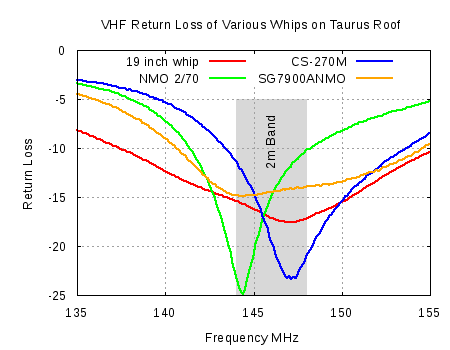
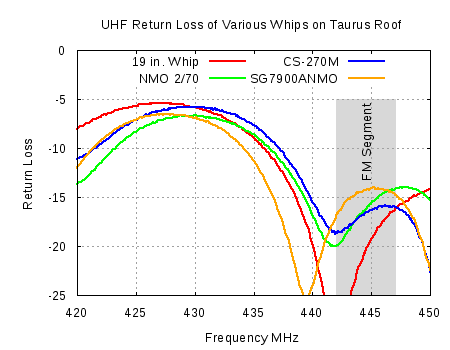
2m/440 Mobile Antenna Conclusions?
The above is simply a bunch of data of some popular mobile antennas taken with great care using a good VNA. If it helps anyone it will have been worthwhile.
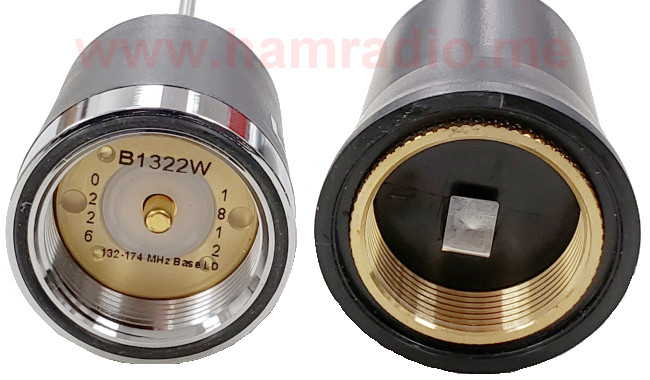
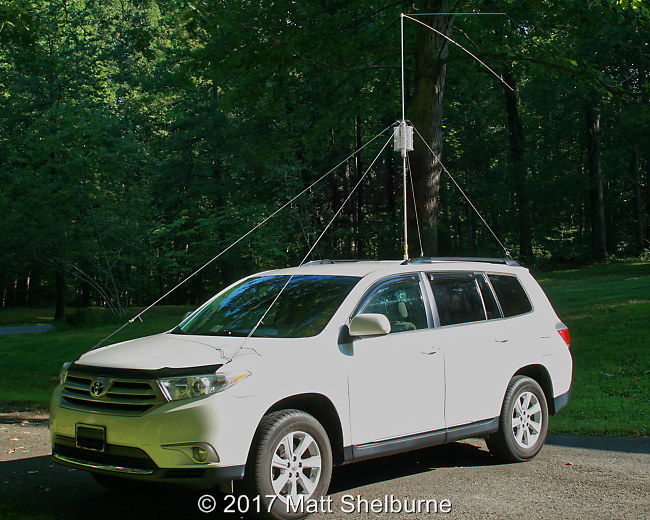
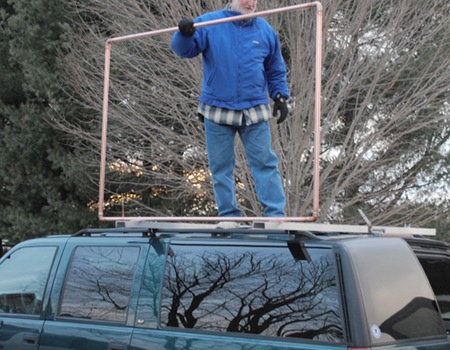
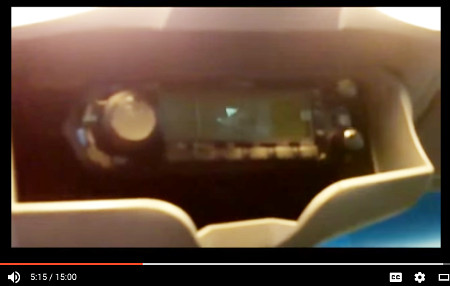
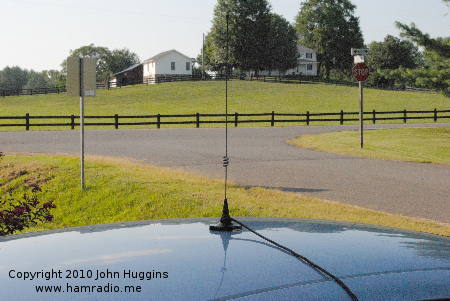
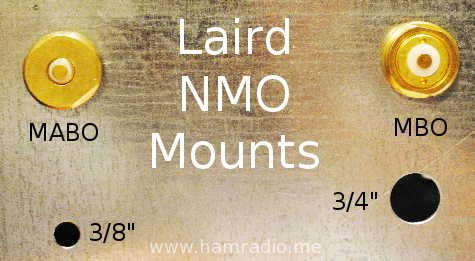
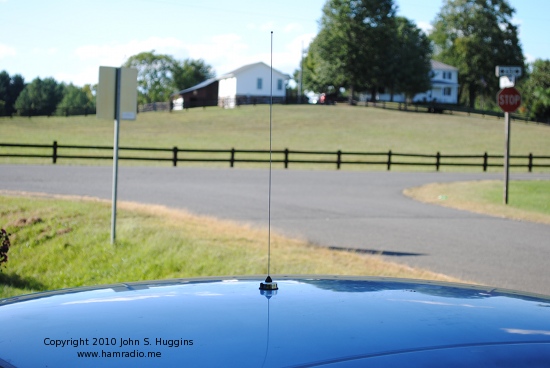
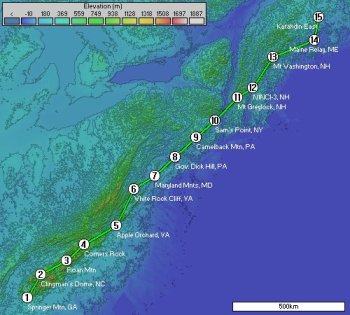
Forgot password?
Close message
Subscribe to this blog post's comments through...
Subscribe via email
SubscribeComments
Post a new comment
Comment as a Guest, or login:
Comments by IntenseDebate
Reply as a Guest, or login: